The territory of Vercelli is characterized by rice cultivation: in fact, here in the spring season the landscape turns into a checkered sea because the water submerges the rice fields in which the entire natural surroundings and the ancient parish churches scattered in the immense reflective checkerboard that is created are reflected. A very impressive sight that is worth seeing. In the summer season, on the other hand, the rice seedlings grow, lighting up the whole area with a beautiful bright green; finally, in the fall, the green turns gold, the color of rice now ripe, ready to be harvested. The Vercelli area can be called the “European rice province” because its cultivation represents a unique historical, cultural and territorial heritage in Europe, to be valued and protected. More than a hundred varieties of rice are grown here: to mention the Riso di Baraggia Biellese e Vercellese, the first and only P.D.O. in rice since 2007. Even theRice Academy, a nonprofit association that brings together operators in the Vercelli food and wine sector and the entire rice supply chain with the common goal of upgrading and promoting the area’s catering, food and wine traditions, and tourism and cultural resources, was born.
Known as far back as 3500 B.C. in Asia, rice spread to the Vercelli area in the 15th century, probably between 1427 and 1493, and as it discovered its usefulness as a fundamental source of livelihood, it began to bring about major changes in the landscape: land reclamation and irrigation works became necessary. It was the Cistercian monks in the Lucedio area (the centerpiece was in fact the Abbey of Santa Maria) who initiated the reclamation works and introduced the massive cultivation of rice. Thus were born the Grange, residential buildings and agricultural centers where monks outside the monastery reclaimed land covered with lowland forest to make it suitable for agricultural use. The grange, literally “granaries,” are now modern farms and are still centers of rice production.

Around the rice-growing areas, particularly in the area of the Grange and Baraggia, small rural villages have sprung up over time, rich in ancient relics, such as small Romanesque churches, remnants of ricetti and castles.
For example, in the area of Lucedio where the Grange that dot the lower Vercelli area are developed is the Church of the Most Holy Name of Mary, better known as the Sanctuary of the Madonna delle Vigne. Built in the first half of the 17th century on a pre-existing sacred building, the sanctuary is a remarkable example of Piedmontese Baroque. Abandoned for decades, the site is linked to numerous legends: the most famous is that of the Devil’s Score, a palindrome tune considered magical depicted in a fresco inside the shrine. When played backwards, the song is said to be able to free a demon held captive in the crypt of the church of the nearby Lucedio Abbey, also called the Principality of Lucedio. Founded in 1123 by Cistercian monks at the behest of the Marquis of Monferrato, it is now a modern, visitable farm that has managed to retain its characteristic medieval surroundings. Also in the Grange area, in Trino, stands the church of San Michele in Insula. The Romanesque-style parish church has early medieval origins, but was probably built on a preexisting sacred building, since the area was inhabited since Roman times. The nave, compared to the other two that make up the structure, is more elevated; fragments of 12th-century frescoes depicting a Crucifixion and Scenes from the life of St. Michael have been found inside the parish.
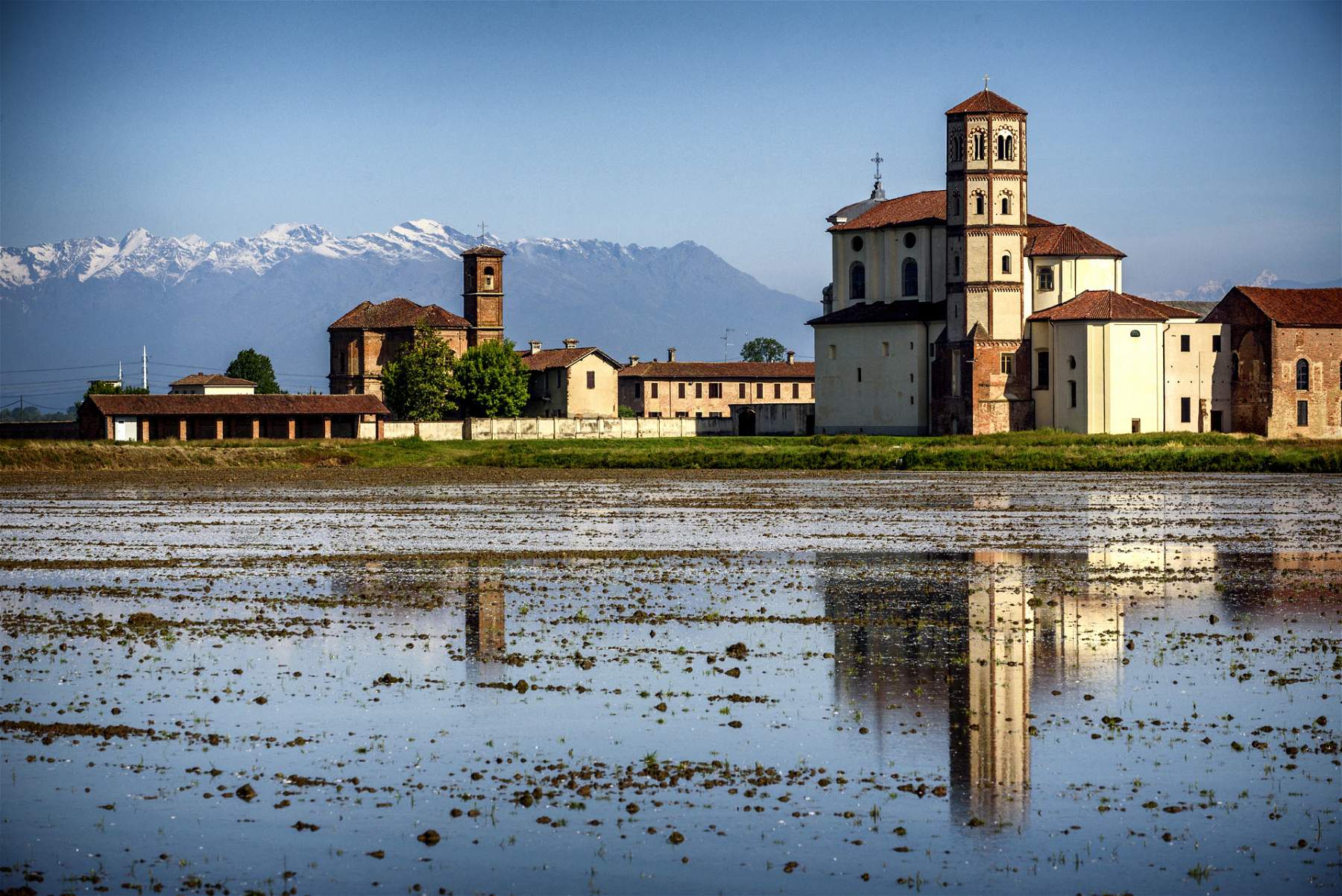
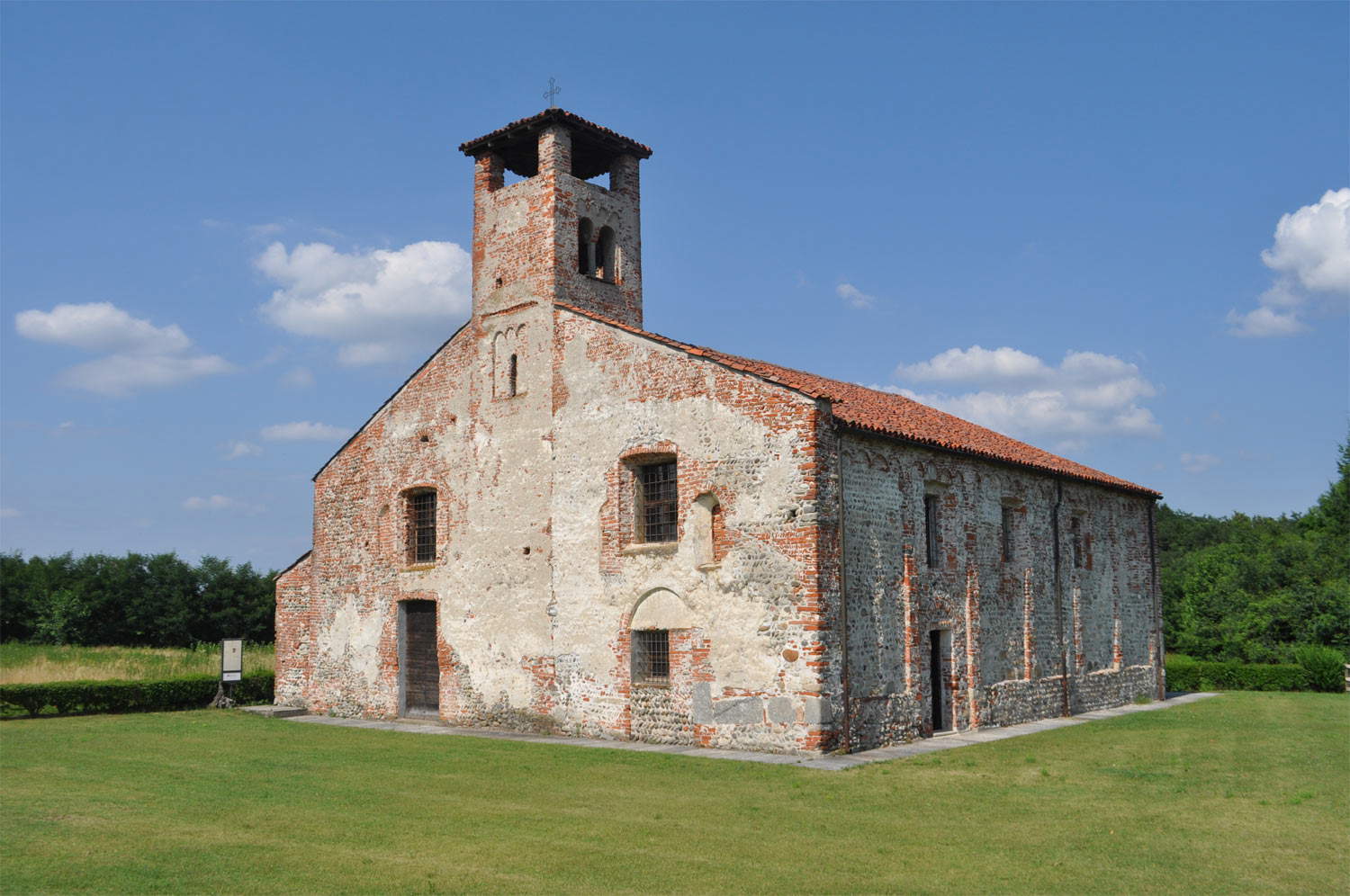
The Baraggia area is one of the last and most significant examples of prairie in the Po Valley area (in fact, it looks like a savannah), as well as being an area very much associated with rice cultivation; in fact, as mentioned above, it is the area where Italy’s first and only PDO rice was born. In one of its small farming villages, Lenta, is the parish church of Santo Stefano, richly decorated with frescoes. Built in the 11th century in Romanesque style on a pre-existing church dating from the 5th century, it was formerly dedicated to Saints Stephen and Anthony Abbot (the blessing of animals was also held here). It has two apses, of which the one dedicated to St. Stephen appears to be the oldest; it is decorated with frescoes depicting Christ Pantocrator with symbols of the Evangelists and the Apostles, the Annunciation, the Nativity, the Adoration of the Magi and other figures of saints. In Lenta there are also the remains of an ancient ricetto, one of the best preserved, of which parts such as houses and alleys are still visible.
In another small town with a rice-growing tradition, Pertengo, stands the Sanctuary of the Madonna of Oropa, built in 1742 after an event that occurred on the spot where a pillar with an effigy of the Madonna of Oropa stood. It seems that on February 2, Candlemas Day, or the Christian feast day commemorating the presentation of Jesus at the temple, a flowering hawthorn appeared at this site, despite the cold and snowy weather. The Lateran fathers of the Basilica of St. Andrew in Vercelli considered the event miraculous and thus decided to erect the Shrine of Our Lady of Oropa. It is a one-room building with a side chapel located on the periphery of the town; the facade has a triportico in front with small columns, while the interior is decorated with gold-colored ornaments and floral motifs.
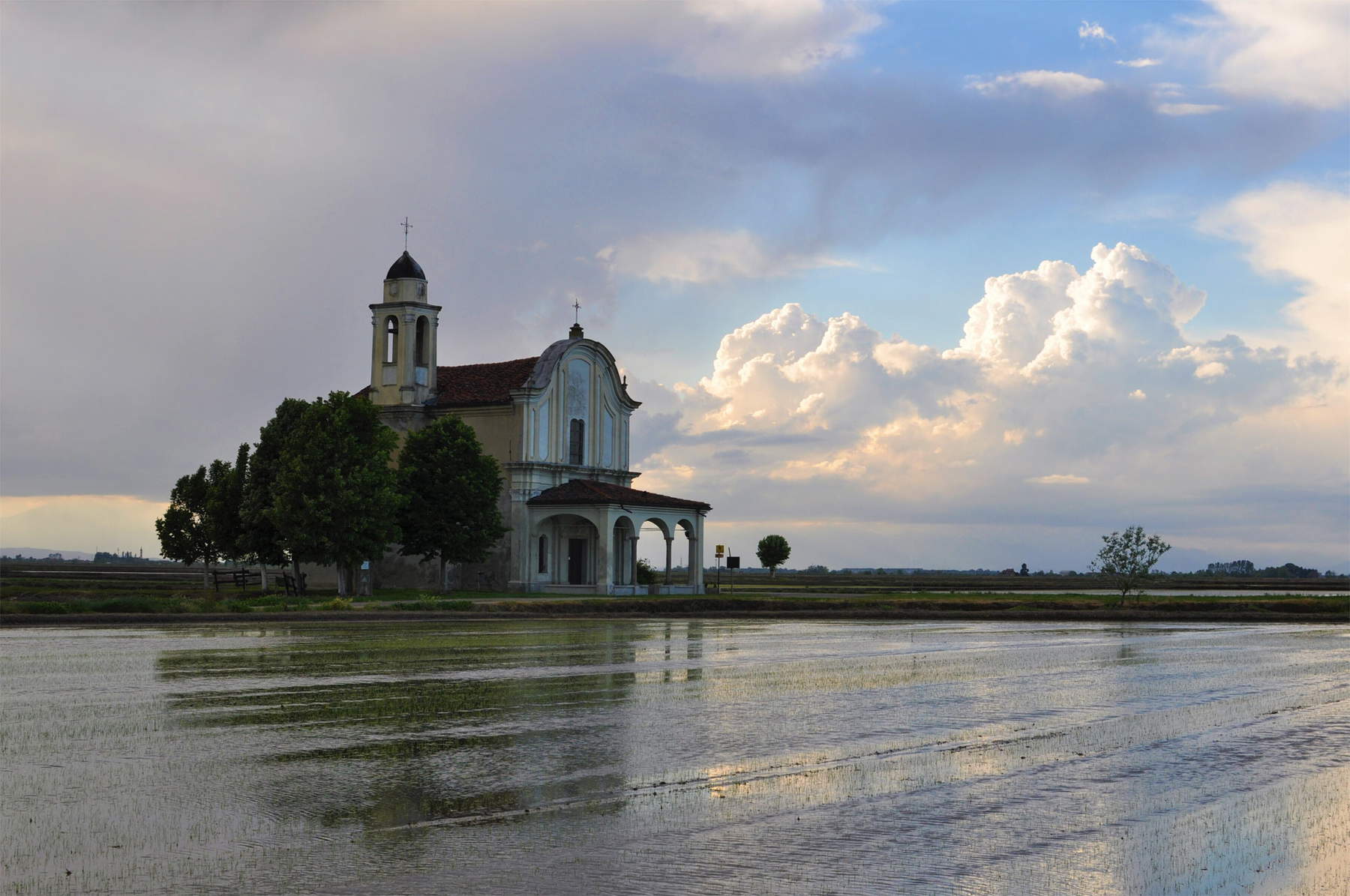
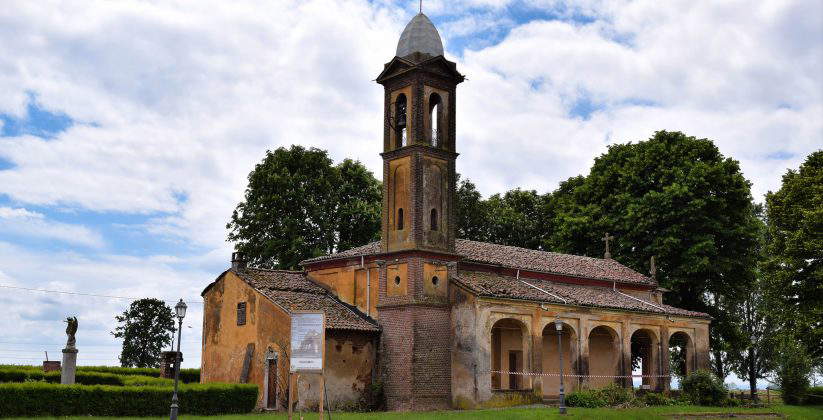
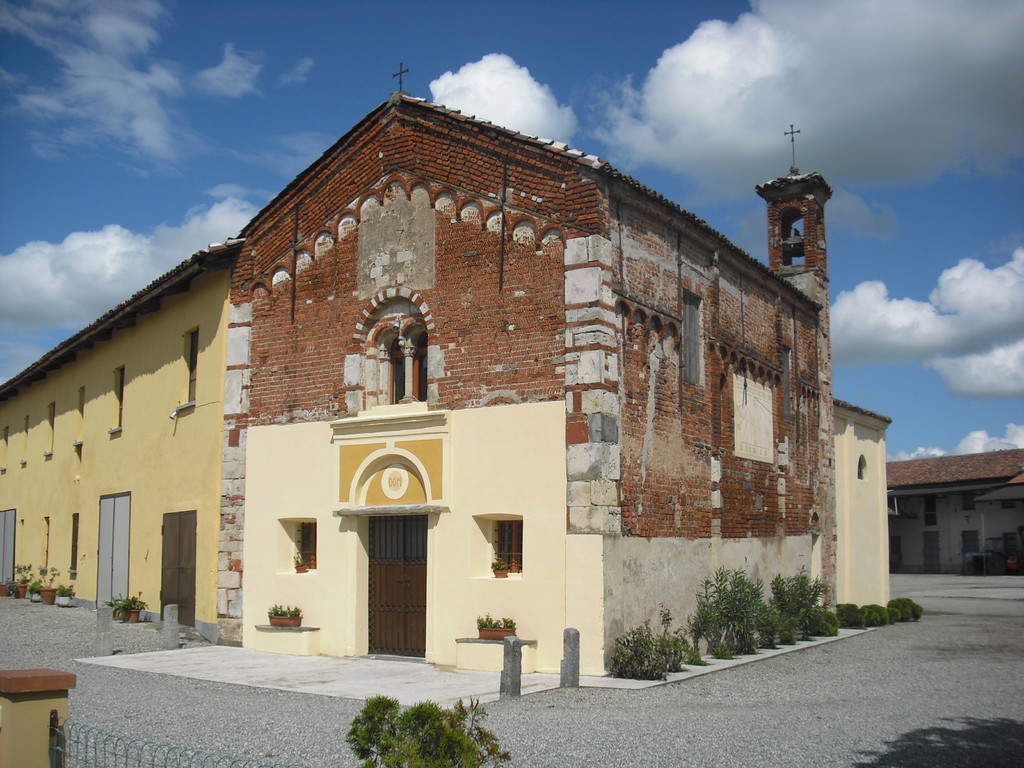
And again, near Ronsecco, you can visit the Sanctuary of the Madonna dei Viri Veri, surrounded by greenery and the waters of the rice fields. It dates from the late 16th century, but was erected on a preexisting 15th-century church. It is externally surrounded by a portico probably added later, during the 18th century, and the façade has frescoes on the pediment by the painter Saletta di Casale. The shrine is linked to the liberation from a terrible cholera epidemic that struck the community in 1867, since when the statue of the Assumption became an object of great veneration.
Finally, in Livorno Ferraris, there is the church of Santa Maria d’Isana, whose construction dates back to the first half of the 12th century and is said to have been rebuilt after the Po Valley earthquake of 1117 by the order of the Knights Templar who had settled here in a mansio of their own (this Templar mansio is first mentioned in a document from 1208. The religious and chivalric order of the Templars gave assistance and hospitality to pilgrims: in fact, they created their own settlement in Isana, a crucial point between the cities of Vercelli, Casale, and Ivrea, on the Via Liburnasca. This church, too, is linked to the end of an epidemic, in this case of plague, thanks to Our Lady, who had driven that terrible scourge away from the territory.
There are many remnants of ricetti, parish churches and small Romanesque churches to be found near the Vercelli rice fields; buildings dropped in highly evocative settings that reveal the history and tradition of the area. That is why it would be worthwhile to trace small itineraries of slow tourism to learn more about unusual places on our peninsula.
 |
| Vercelli, five beautiful parishes surrounded by rice fields |
Warning: the translation into English of the original Italian article was created using automatic tools. We undertake to review all articles, but we do not guarantee the total absence of inaccuracies in the translation due to the program. You can find the original by clicking on the ITA button. If you find any mistake,please contact us.